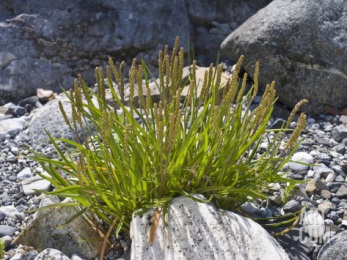Goose Tongue

Botanical Name: Plantago maritima
Common Name: Goosetongue
Other Names: weguaq (something like grass)
Found in: Saltwater, sheltered beaches
Physical Characteristics: Leaves can reach about 14 inches at maturity. The leaves form in clusters at the plant’s base and resembles blades of grass, hence its Sugt’stun name.
Nutritional Value: Rich in vitamins A and C, good source of fiber and iron.
Parts of the plant used: leaves, roots
When plant should be gathered: Some people gather goosetongue leaves in the spring when they first begin to grow, while others wait until mid-June or July. Today people preserve them in brine or freezers. In earlier times, they reportedly kept them in seal oil in an animal stomach.
Plant applications: food, tea
Reported Benefits: food, weight loss.
Preparation/Processing: Food: The leaves can be blanched for a minute or two, cooled, and put into sealed bags for winter use. Cooks in Nanwalek like to sauté them with bits of bacon and /or bacon grease.
Weight loss: Drinking Goosetongue tea made by crushing and then boiling the long, thick roots, is said to produce weight loss.
